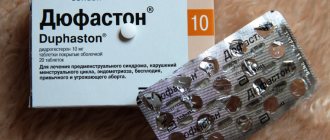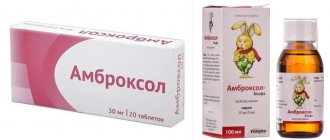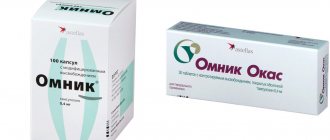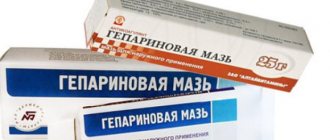What does Tempalgin help with: indications
- moderate or mild pain syndrome (including headache, migraine, toothache, neuralgia, radicular syndrome, myalgia, arthralgia, algodismenorrhea), especially in patients with increased nervous excitability
- mild pain of visceral origin (including renal, hepatic, intestinal colic) in combination with antispasmodic therapy
- pain syndrome after surgical and diagnostic interventions (as an adjuvant)
- increased body temperature due to colds and other infectious and inflammatory diseases.
Description of the medicine
So, what is “Tempalgin” for? The medication has a complex effect on the human body.
It has the following properties:
- analgesic;
- antipyretic;
- sedative.
Most people know what Tempalgin helps with and, if necessary, resort to this medication. The product quite effectively eliminates pain syndromes provoked by a variety of factors. This medicine is often used for severe migraines. This medication is used for toothache and many other pathologies that cause unpleasant discomfort in a person.
The medicine is an antipyretic. Therefore, you should know what Tempalgin can deprive you of. The medication is used for febrile conditions and high temperatures. Often this remedy is included in complex therapy for acute respiratory viral infections and influenza.
In addition, the medicine can have a calming effect on the nervous system. The drug can eliminate such negative manifestations as fear, motor agitation, and anxiety. Taking medications helps lower blood pressure.
The product has a quick effect on the body. After taking the medication, the sedative effect will appear within half an hour. Analgesic effects can be expected within 1-2 hours.
The medicine is produced in only one dosage form - in the form of tablets.
Contraindications
- hypersensitivity to the components of the drug,
- severe renal/liver failure,
- chronic heart failure,
- arterial hypotension (SBP below 100 mm Hg),
- inhibition of hematopoiesis (granulocytopenia, leukopenia, agranulocytosis, cytostatic or infectious neutropenia),
- glucose-6-phosphate dehydrogenase deficiency,
- "aspirin" asthma,
- children's age (up to 14 years).
Prescribed with caution for kidney diseases (pyelonephritis, glomerulonephritis, including a history), liver/renal failure of moderate severity, bronchial asthma, predisposition to the development of arterial hypotension, and long-term alcohol abuse.
Side effects
| Digestive system: | epigastric burning, cholestasis, hyperbilirubinemia, increased activity of liver transaminases, jaundice, dry mouth. |
| Vessels, heart: | cyanosis, tachycardia, low or high blood pressure. |
| CNS: | dizziness, headaches; some cases – hallucinations. |
| Urinary system: | when consumed in high doses - impaired renal function (anuria, interstitial nephritis, oliguria, proteinuria), redness of urine. |
| Hematopoietic system: | leukopenia, agranulocytosis, thrombocytopenia. |
| Allergic reactions: | skin rash, Quincke's edema, itching, bronchospasm, urticaria (including on the mucous membranes of the nasopharynx and conjunctiva), exudative erythema multiforme, anaphylactic shock, toxic epidermal necrolysis. |
Overdose
Signs of an overdose of Tempalgin include vomiting, nausea, oliguria, epigastric pain, tinnitus, decreased blood pressure, tachycardia, impaired consciousness, shortness of breath, convulsions, and drowsiness.
Overdose is treated by gastric lavage, the use of activated charcoal and saline laxatives. Severe cases require forced diuresis, hemodialysis, and symptomatic treatment. Patients with seizures are given intravenous diazepam and fast-acting barbiturates.
Contraindications
Did you know that...
Next fact
Tempalgin is not prescribed for:
- individual hypersensitivity to metamizole sodium, triacetonamine-4-toluene sulfonate, pyrazolone derivatives;
- severe liver failure;
- chronic heart failure;
- severe renal failure;
- pregnancy;
- arterial hypotension;
- breastfeeding;
- inhibition of hematopoiesis (leukopenia, granulocytopenia, infectious or cytostatic neutropenia, agranulocytosis);
- deficiency of glucose-6-phosphate dehydrogenase;
- treatment of children under 15 years of age;
- "aspirin" asthma.
Caution is required in the use of Tempalgin in case of kidney pathologies (glomerulonephritis, pyelonephritis, including those previously suffered), moderate renal or liver failure, long-term alcohol abuse, predisposition to arterial hypotension, as well as bronchial asthma.
During pregnancy and lactation
are prohibited from taking Tempalgin . It is important to understand that both active ingredients are excreted in breast milk. Therefore, the medicine cannot be used during lactation.
Video: “Pharmacology and action of Tempalgin”
Tempalgin: instructions for use
Inside, after meals, with water.
The dose depends on the severity of pain and individual sensitivity to the drug.
Adults: the usual dose is 1 tablet. 1–3 times a day. The maximum single dose should not exceed 1 tablet. The maximum daily dose is 4 tablets.
For dental procedures: 1 table. 30 minutes before the intervention.
Children over 15 years old: 1 tablet. in a day. The maximum daily dose is 2 tablets.
Special patient groups
Patients over 65 years of age. Usually no dose reduction is required. In patients with age-related impairment of renal and liver function, treatment with Tempalgin should be short-term. The maximum daily dose is 2 tablets.
Liver dysfunction. In patients with impaired liver function, an increase in T1/2 of metamizole sodium metabolites is possible. In patients with moderate or severe liver damage, treatment with 1/2 the recommended adult dose is recommended (maximum daily dose - 2 tablets).
Renal dysfunction. Metamizole sodium and its metabolites are excreted by the kidneys. In patients with impaired renal function, treatment with Tempalgin® should be carried out using 1/2 the recommended dose for adults (maximum daily dose - 2 tablets).
Duration of treatment
Treatment with Tempalgin® should not last more than 3–5 days. Its use over a longer period of time or in higher doses is possible only after consultation with a doctor.
Dosage form, composition, description
The drug is available in the form of green tablets with a round shape, convex on both sides, and a glossy surface. Each unit is covered with a membrane that quickly dissolves in the intestine.
The medication contains several main components; in one tablet their content is:
- metamizole – 500 mg;
- tempidone – 20 mg.
In addition, Tempalgina tablets contain additional substances, such as:
- titanium dioxide;
- magnesium stearate;
- wheat starch;
- cellulose;
- talc;
- green dye;
- dibutyl phthalate;
- glycerol;
- Castor oil;
- L acetone;
- polyethylene glycol.
Each blister contains 10 tablets. Most often, packages with two or ten blisters and instructions for use are found on sale.
special instructions
X-ray contrast agents, colloidal blood substitutes and penicillin should not be prescribed when using metamizole sodium.
You should not drink alcohol while taking the drug.
The use of the drug in patients receiving cytostatics should only be done under medical supervision.
During the use of metamizole sodium, agranulocytosis may develop, and therefore, if an unclear origin of fever, chills, sore throat, difficulty swallowing, stomatitis is detected, as well as with the development of vaginitis or proctitis, discontinuation of the drug is necessary.
With long-term (more than 7 days) use of the drug, monitoring of the blood picture and the functional state of the liver is necessary.
Tempalgin should not be used to relieve acute abdominal pain (until the cause is determined).
Use for liver dysfunction
Contraindicated in cases of severe liver dysfunction.
Use for renal impairment
Contraindicated in cases of severe renal impairment.
Impact on the ability to drive vehicles and other mechanisms that require increased concentration
Due to the anxiolytic effect of the drug, during the period of taking Tempalgin, you should refrain from engaging in potentially hazardous activities that require increased attention and speed of psychomotor reactions.
Dosage and method of administration
As indicated in the instructions for use, Tempalgin tablets are taken orally, without chewing, with a sufficient amount of liquid, during or after meals.
- Adults are prescribed 1 tablet. 1-3 times/day, if the effectiveness is insufficient, you can take 1 more tablet. The maximum single dose is 2 tablets, the maximum daily dose is 6 tablets. Duration of treatment – no more than 5 days.
Increasing the daily dose or increasing the duration of treatment is possible only under the supervision of a physician.
Compatibility with other drugs
Tempalgin enhances the effects of ethanol.
Concomitant use of Tempalgin with chlorpromazine or other phenothiazine derivatives can lead to the development of severe hyperthermia.
Sedatives and tranquilizers enhance the analgesic effect of the drug.
When used simultaneously, thiamazole and cytostatics increase the risk of developing leukopenia.
With simultaneous use of metamizole sodium with cyclosporine, the concentration of the latter in the blood plasma decreases.
Metamizole sodium, displacing oral hypoglycemic drugs, indirect anticoagulants, corticosteroids and indomethacin from protein binding, increases their effect.
When used simultaneously, barbiturates, phenylbutazone and other inducers of microsomal liver enzymes weaken the effect of metamizole sodium.
Concomitant use of metamizole sodium with other non-opioid analgesics, tricyclic antidepressants, oral contraceptives, and allopurinol may lead to mutually enhanced toxic effects.
Codeine, histamine H2 receptor blockers and propranolol slow down the excretion of metamizole sodium and enhance its effect.
TEMPALGIN
Drug: TEMPALGIN®
Active substance: metamizole sodium, non appropriated ATC code: N02BB72 KFG: Analgesic-antipyretic combined composition Reg. number: P No. 008775 Registration date: 08.26.05 Owner reg. ID: SOPHARMA AD {Bulgaria}
DOSAGE FORM, COMPOSITION AND PACKAGING
? Green film-coated tablets
| 1 tab. | |
| metamizole sodium | 500 mg |
| triacetonamine 4-toluene sulfonate (tempidone) | 20 mg |
Excipients: wheat starch, microcrystalline cellulose, talc, magnesium stearate, crospovidone (kollidon K25), titanium dioxide, polyethylene glycol 400, castor oil, glycerol, dibutyl phthalate, eudrazite L acetone 12.5, green dye.
10 pieces. - blisters (2) - cardboard packs. 10 pieces. - blisters (10) - cardboard packs.
The description of the drug is based on the officially approved instructions for use.
PHARMACHOLOGIC EFFECT
Analgesic-antipyretic combined composition. It has analgesic, antipyretic, mild anti-inflammatory and sedative effects. The drug contains the non-opioid analgesic metamizole sodium and the anxiolytic (tranquilizer) tempidone.
PHARMACOKINETICS
Data on the pharmacokinetics of the drug Tempalgin are not provided.
INDICATIONS
- moderate or mild pain syndrome (including headache, migraine, toothache, neuralgia, radicular syndrome, myalgia, arthralgia, algodismenorrhea), especially in patients with increased nervous excitability;
- mild pain of visceral origin (including renal, hepatic, intestinal colic) in combination with antispasmodic therapy;
— pain syndrome after surgical and diagnostic interventions (as an adjuvant);
- increased body temperature during colds and other infectious and inflammatory diseases.
DOSING REGIME
The tablets are taken orally, without chewing, with a sufficient amount of liquid, during or after meals.
Adults are prescribed 1 tablet. 1-3 times/day, if the effectiveness is insufficient, you can take 1 more tablet. The maximum single dose is 2 tablets, the maximum daily dose is 6 tablets. Duration of treatment - no more than 5 days. Increasing the daily dose or increasing the duration of treatment is possible only under the supervision of a physician.
SIDE EFFECT
From the digestive system: rarely - burning sensation in the epigastric region, dry mouth, cholestasis, jaundice, increased activity of liver transaminases, hyperbilirubinemia.
From the central nervous system: headache, dizziness; in some cases - hallucinations.
From the cardiovascular system: decreased or increased blood pressure, tachycardia, cyanosis.
From the hematopoietic system: agranulocytosis, leukopenia, thrombocytopenia.
From the urinary system: when used in high doses - renal dysfunction (oliguria, anuria, proteinuria, interstitial nephritis); red coloration of urine.
Allergic reactions: skin rash, itching, urticaria (including on the conjunctiva and on the mucous membranes of the nasopharynx), Quincke's edema, exudative erythema multiforme (including Stevens-Johnson syndrome), toxic epidermal necrolysis (Lyell's syndrome), bronchospasm, anaphylactic shock.
CONTRAINDICATIONS
- severe liver failure;
- severe renal failure;
— chronic heart failure;
— arterial hypotension (decrease in systolic blood pressure below 100 mmHg);
- inhibition of hematopoiesis (granulocytopenia, leukopenia, agranulocytosis, cytostatic or infectious neutropenia);
- deficiency of glucose-6-phosphate dehydrogenase;
- “aspirin” asthma;
- pregnancy;
- lactation period (breastfeeding);
- children's age (up to 14 years);
- hypersensitivity to metamizole sodium, pyrazolone derivatives or triacetonamine-4-toluene sulfonate.
Prescribed with caution for kidney diseases (pyelonephritis, glomerulonephritis, including a history), liver/renal failure of moderate severity, bronchial asthma, predisposition to the development of arterial hypotension, and long-term alcohol abuse.
PREGNANCY AND LACTATION
The drug is contraindicated for use during pregnancy. The drug should not be used during lactation, because both components are excreted in breast milk.
SPECIAL INSTRUCTIONS
X-ray contrast agents, colloidal blood substitutes and penicillin should not be prescribed when using metamizole sodium.
You should not drink alcohol while taking the drug.
The use of the drug in patients receiving cytostatics should only be done under medical supervision.
During the use of metamizole sodium, agranulocytosis may develop, and therefore, if an unclear origin of fever, chills, sore throat, difficulty swallowing, stomatitis is detected, as well as with the development of vaginitis or proctitis, discontinuation of the drug is necessary.
With long-term (more than 7 days) use of the drug, monitoring of the blood picture and the functional state of the liver is necessary.
Tempalgin should not be used to relieve acute abdominal pain (until the cause is determined).
Impact on the ability to drive vehicles and operate machinery
Due to the anxiolytic effect of the drug, during the period of taking Tempalgin, you should refrain from engaging in potentially hazardous activities that require increased attention and speed of psychomotor reactions.
OVERDOSE
Symptoms: nausea, vomiting, epigastric pain, oliguria, tachycardia, decreased blood pressure, shortness of breath, tinnitus, drowsiness, impaired consciousness, convulsions.
Treatment: gastric lavage, administration of saline laxatives and activated carbon; in severe cases - hemodialysis, forced diuresis, symptomatic therapy, with the development of convulsive syndrome - intravenous administration of diazepam and fast-acting barbiturates.
DRUG INTERACTIONS
Tempalgin enhances the effects of ethanol.
Concomitant use of Tempalgin with chlorpromazine or other phenothiazine derivatives can lead to the development of severe hyperthermia.
Sedatives and tranquilizers enhance the analgesic effect of the drug.
When used simultaneously, thiamazole and cytostatics increase the risk of developing leukopenia.
With simultaneous use of metamizole sodium with cyclosporine, the concentration of the latter in the blood plasma decreases.
Metamizole sodium, displacing oral hypoglycemic drugs, indirect anticoagulants, corticosteroids and indomethacin from protein binding, increases their effect.
When used simultaneously, barbiturates, phenylbutazone and other inducers of microsomal liver enzymes weaken the effect of metamizole sodium.
Concomitant use of metamizole sodium with other non-opioid analgesics, tricyclic antidepressants, oral contraceptives, and allopurinol may lead to mutually enhanced toxic effects.
Codeine, histamine H2 receptor blockers and propranolol slow down the excretion of metamizole sodium and enhance its effect.
CONDITIONS OF VACATION FROM PHARMACIES
The drug is approved for use as a means of OTC.
CONDITIONS AND DURATION OF STORAGE
The drug should be stored in a dry place, protected from light, out of the reach of children, at a temperature not exceeding 25°C. Shelf life: 4 years.
Overdose of the drug
Each patient must adhere only to the treatment regimen that was recommended to him by the doctor if he is taking Tempalgin tablets. The instructions warn that exceeding the dose or prolonged use very often leads to an overdose.
This condition is manifested by the following symptoms:
- drowsiness;
- noise in ears;
- feeling tired;
- dyspeptic disorders;
- lethargy;
- pain in the epigastric zone;
- cardiopalmus;
- oliguria;
- arterial hypotension;
- convulsions;
- confusion or loss of consciousness.
The patient should rinse the stomach and give saline solutions and sorbents to drink. Such manifestations require mandatory consultation with a doctor.
Composition of the drug
Having gained an idea of the drug “Tempalgin”, what the medicine helps with, let’s look at what determines its effectiveness. As mentioned above, the product is a combination drug. It contains sedatives and painkillers.
The main substances that provide a beneficial effect are:
- Metamizole sodium. This component is a strong pain reliever. It is able to eliminate small inflammatory processes occurring in the body.
- Tempidon. This substance eliminates the patient’s feelings of fear, anxiety, and restlessness. It reduces motor excitability. Reduces blood pressure slightly.
However, the effectiveness of the product lies precisely in the combination of these substances. Because they enhance each other's effects. It is thanks to this successful combination that most people know well, when it comes to the drug Tempalgin, what this remedy helps with and, if necessary, use it.









